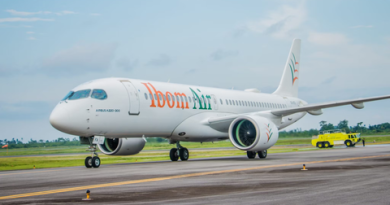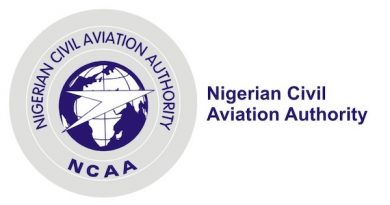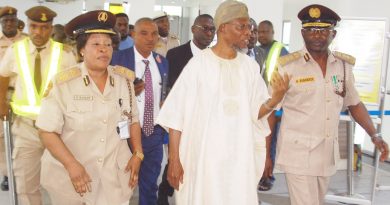NCAA Cautions against baseless and unguarded statements on Radar Coverage
Oru Leonard
The Nigeria Civil Aviation Authority (NCAA), has disclaimed media statements insinuating that the Nigerian airspace is insecure due to lack of coverage by Radar.
A press release signed by Capt. Chris Najomo, Ag. Director General Civil Aviation noted that “Ordinarily, the Authority usually refrains from reacting to such baseless and unguarded statements, but to assure the flying public in particular,and Nigerians in general, the Authority is constrained to put the records straight.”
NCAA affirmed the statement from the Nigerian Airspace Management Agency (NAMA) on the Total Radar Coverage Of Nigeria (TRACON), and disclosed that it investigated two recent cases of violation of the prohibited flights zones – DNP4- in Abuja and established that both violations comprised of controlled flights in a controlled airspace, but strayed into restricted airspace as a result of adverse weather.
NCAA also confirmed that NAMA had complete radar footages of the two violations with full details of the identities of the aircraft and operators involved. This was only made possible due to functional Primary and Secondary Surveillance Radars in Abuja. Similar installations are in Lagos,Kano and Port-Harcourt.
“The Authority in keeping with its regulatory responsibilities issued an All Operators Letter (AOL DGCA/021/24) wherein the term ‘unknown aircraft’ was used as reported to NCAA which is the normal security terminology. However, as explained above, investigations revealed NAMA had complete footages and details of the aircraft that entered the prohibited flight zone.The writer, obviously, not conversant with the technical operations of radar systems ought to have simply consulted the right professionals to be educated accordingly.
“For purposes of clarity, the Primary Surveillance Radar alone only identifies aircraft as moving targets without aircraft identity. The Monopulse Secondary Surveillance Radar (MSSR), on the other hand,which forms a major component of the TRACON, is the equipment that allows for identification of any aircraft equipped with ATC Mode ‘S’transponder”, Mr. Najomo explained.
He further informed that the requirement for all aircraft flying in controlled airspace to have serviceable ATC transponders in an international standard that Nigeria ensures strict adherence to. “This requirement derived from Annex 6 to the Convention on International Aviation is documented in Part 7 of the Nigeria Civil Aviation Regulations. This, therefore, makes it a violation of the regulations, and indeed a security breach, for any aircraft to put this system off while flying in controlled airspace, and such action would attract appropriate sanctions in accordance with NCAA’s enforcement procedures, including possible criminal referral.”
On the issue of welfare of Air Traffic Controllers (ATCOs), NCAA Boss said that there had been interventions recently in a face-off between ATCOs and NAMA on the need for improved remuneration and working conditions for ATCOs.
“Expectedly, in aligning with the Honourable Minister’s five-point agenda on capacity development, NCAA is extending this drive to other aviation professionals.
“As regards the improvement of Nigeria’s aviation infrastructure, Nigeria’s Radar coverage is being backed up with five additional MSSR stations at Obubbra, Ilorin, Talata Mafara, Maiduguri and Numan to augment the four existing Radar centers to achieve total coverage of the country. This is also in line with the Honourable Minister’s five-point agenda on infrastructure and fully supported by NCAA’s oversight in ensuring installed infrastructure continually deliver the desired output.
It is worth noting that such upgrade is normal global practice when dealing with any electronics system. These systems must be updated from time to time since technology is not static, and the Authority through its continuous oversight has not found NAMA wanting in this regard. Thus, NAMA in coordination with the Federal Ministry of Aviation and Aerospace Development is working on system upgrade of the Communication, Navigation and Surveillance (CNS), infrastructure.
“Finally, the NCAA wishes to unequivocally assure the public that there is no cause for alarm as everything necessary is being undertaken to ensure safe and secure air navigation in Nigeria’s airspace”, Najomo concluded.
Capt. Chris Najomo
Ag. Director General Civil Aviation
The attention of the Nigeria Civil Aviation Authority (NCAA), has been drawn to statements insinuating that the Nigerian airspace is insecure due to lack of coverage by Radar.
Ordinarily, the Authority usually refrains from reacting to such baseless and unguarded statements, but to assure the flying public in particular,and Nigerians in general, the Authority is constrained to put the records straight.
NCAA firmly aligns with the statement from the Nigerian Airspace Management Agency (NAMA) on the Total Radar Coverage Of Nigeria (TRACON). In furtherance to this, NCAA investigated two recent cases of violation of the prohibited flights zones – DNP4- in Abuja and established that both violations comprised of controlled flights in a controlled airspace,but strayed into restricted airspace as a result of adverse weather.
NCAA can also confirm that NAMA had complete radar footages of the two violations with full details of the identities of the aircraft and operators involved. This was only made possible due to functional Primary and Secondary Surveillance Radars in Abuja. Similar installations are in Lagos,Kano and Port-Harcourt.
The Authority in keeping with its regulatory responsibilities issued an All Operators Letter (AOL DGCA/021/24) wherein the term ‘unknown aircraft’was used as reported to NCAA which is the normal security terminology.However, as explained above, investigations revealed NAMA had complete footages and details of the aircraft that entered the prohibited flight zone.The writer, obviously, not conversant with the technical operations of radar systems ought to have simply consulted the right professionals to be educated accordingly.
For purposes of clarity, the Primary Surveillance Radar alone only identifies aircraft as moving targets without aircraft identity. The Monopulse Secondary Surveillance Radar (MSSR), on the other hand,which forms a major component of the TRACON, is the equipment that allows for identification of any aircraft equipped with ATC Mode ‘S’transponder.
The requirement for all aircraft flying in controlled airspace to have serviceable ATC transponders in an international standard that Nigeria ensures strict adherence to. This requirement derived from Annex 6 to the Convention on International Aviation is documented in Part 7 of the Nigeria Civil Aviation Regulations. This, therefore, makes it a violation of the regulations, and indeed a security breach, for any aircraft to put this system off while flying in controlled airspace, and such action would attract appropriate sanctions in accordance with NCAA’s enforcement procedures, including possible criminal referral.
On the issue of welfare of Air Traffic Controllers (ATCOs), NCAA had, only recently, intervened in a face-off between ATCOs and NAMA on the need for improved remuneration and working conditions for ATCOs. Expectedly,in aligning with the Honourable Minister’s five-point agenda on capacity development, NCAA is extending this drive to other aviation professionals.
As regards the improvement of Nigeria’s aviation infrastructure, Nigeria’s Radar coverage is being backed up with five additional MSSR stations at Obubbra, Ilorin, Talata Mafara, Maiduguri and Numan to augment the four existing Radar centers to achieve total coverage of the country. This is also in line with the Honourable Minister’s five-point agenda on infrastructure and fully supported by NCAA’s oversight in ensuring installed infrastructure continually deliver the desired output.
It is worth noting that such upgrade is normal global practice when dealing with any electronics system. These systems must be updated from time to time since technology is not static, and the Authority through its continuous oversight has not found NAMA wanting in this regard. Thus,NAMA in coordination with the Federal Ministry of Aviation and Aerospace Development is working on system upgrade of the Communication,Navigation and Surveillance (CNS), infrastructure.
“Finally, the NCAA wishes to unequivocally assure the public that there is no cause for alarm as everything necessary is being undertaken to ensure safe and secure air navigation in Nigeria’s airspace”, Najamo concluded.




